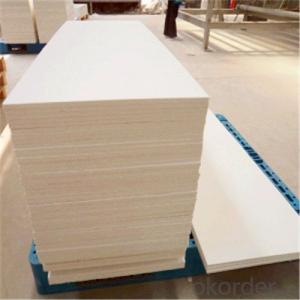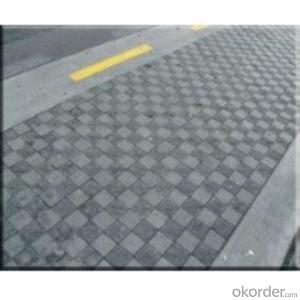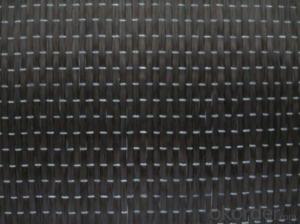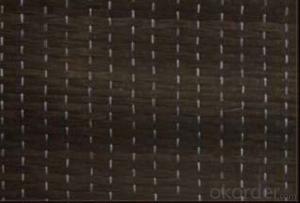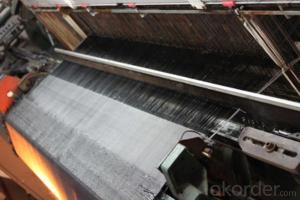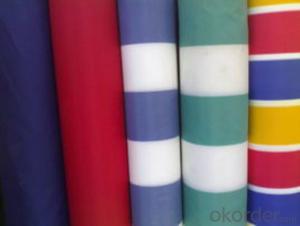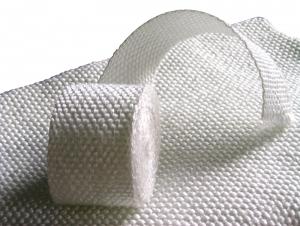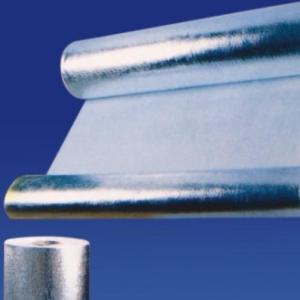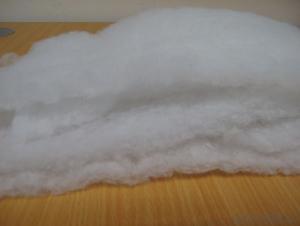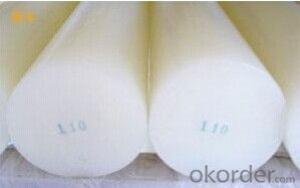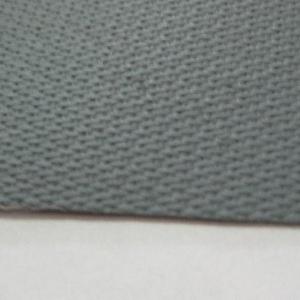pure white ceramic fiber blanket with low price
- Loading Port:
- Shanghai
- Payment Terms:
- TT OR LC
- Min Order Qty:
- 1 m.t.
- Supply Capability:
- 111 m.t./month
OKorder Service Pledge
OKorder Financial Service
You Might Also Like
Specifications
Low thermal conductivity
Excellent insulating effect
Good chemical stability
Stable high temperature performance
Easy to cut
Features:
1.Needled blanket
2.Non-combustible
3.Low density and low thermal conductivity
4.Excellent chemical stability
5.Resilience and resistance to thermal shock
6.Flexible and easy to cut or install
7.Good sound insulation and erosion resistance
8.Contain no organic binder
9.Asbestos free
10.Blanket density:96kg/m3,128kg/m3
11.Other thickness or density variations are subject to order
12.Available size:7200mm*610mm*10-50mm
13.Additional coating or coverings according to order
14.Package:520 cartons in a 40HC container,440 cartons in a 40GP container,220 cartons in a 20GP container
Application:
This high-quality fiber blanket has excellent processing or construction strength and anti-high temperature
performance which can meet demands for the application of heat insulation on various hot faces and cold
faces in different furnaces. It is a new type of refractory and insulating materials provided by our company
for customers. The product is white with formal dimension and integrates the performance of heat insulation
and thermal preservation together.
1. The insulating material for wall lining and back lining of industrial furnaces and heating devices
2. Insulating materials of high-temperature equipment
3. Material to produce module/folded module
Physical and chemical composition
Common | Standard | Pure | High Aluminium | Zirconium | ||
Classification temperature(°C) | 1100 | 1260 | 1260 | 1360 | 1430 | |
Work temperature(°C) | <1000 | 1050 | 1100 | 1200 | 1350 | |
Color | White | Pure white | Pure white | Pure white | Pure white | |
Density (kg/m3) | 96 | 96 | 96 | 128 | 128 | |
Permanent linear shrinkage(%)(after24 hours,density 128kg/m3) | -4 | -3 | -3 | -3 | -3 | |
Thermal conductivity (w/m.k) density 128kg/m3)
| 0.09(400°C) | 0.09(400°C) | 0.09(400°C) | 0.132(600°C) | 0.76(600°C) | |
Tensile strength (Mpa) density128kg/m3) | 0.08-0.12 | 0.08-0.12 | 0.08-0.12 | 0.08-0.12 | 0.08-0.12 | |
Chemical Composition (% | AL2O3 | 44 | 46 | 47--49 | 52-55 | 39-40 |
AL203+SIO2 | 96 | 97 | 99 | 99 | - | |
AL2O3+SIO2+Zro2 | - | - | - | - | 99 | |
Zro2 | - | - | - | - | 15-17 | |
Fe2O3 | <1.2 | <1.0 | 0.2 | 0.2 | 0.2 | |
Na2O+K2O | ≤0.5 | ≤0.5 | 0.2 | 0.2 | 0.2 | |
Size (mm) | Common 7200*610*10-50 others up to buyer | |||||
- Q:Can glass fiber textiles be used for bulletproof applications?
- Yes, glass fiber textiles can be used for bulletproof applications. Glass fiber textiles are known for their high tensile strength and resistance to impact, making them suitable for bulletproof vests, helmets, and other protective gear. The tightly woven structure of glass fibers can effectively dissipate and distribute the kinetic energy of a bullet, reducing the chances of penetration. However, it is important to note that glass fiber textiles alone may not provide complete protection against high-velocity bullets, and additional layers or materials may be required to enhance the bulletproof capabilities.
- Q:Can glass fiber textiles be used in car body panels?
- Car body panels can utilize glass fiber textiles, commonly referred to as fiberglass. This material has a longstanding history in various industries, including automotive manufacturing. When incorporated into car body panels, fiberglass presents several benefits. Firstly, its lightweight nature contributes to enhanced fuel efficiency and overall vehicle performance. Secondly, fiberglass boasts remarkable strength and durability, making it an optimal choice for car body panels that require resistance against impacts and structural support. Moreover, the flexibility of fiberglass allows for easy molding into intricate shapes, enabling car manufacturers to craft unique and aerodynamic designs. Additionally, fiberglass exhibits corrosion resistance, extending the lifespan of car body panels. All in all, glass fiber textiles are a practical and extensively employed material in the production of car body panels.
- Q:Can glass fiber textile be used in electronics?
- Yes, glass fiber textile can be used in electronics. Glass fiber textile, also known as fiberglass cloth, is a material made from fine fibers of glass. It has excellent properties such as high strength, heat resistance, and electrical insulation. These characteristics make it suitable for a variety of applications in the electronics industry. Glass fiber textile can be used as a substrate for printed circuit boards (PCBs), which are essential components of electronic devices. PCBs provide a platform for mounting and connecting various electronic components such as resistors, capacitors, and integrated circuits. The high strength of glass fiber textile ensures the structural integrity of the PCB, while its electrical insulation properties prevent short circuits and ensure reliable performance. Furthermore, glass fiber textile can be used as insulation material in electronic cables and wires. It provides excellent thermal and electrical insulation, protecting the conductive wires from external factors such as heat, moisture, and electromagnetic interference. This insulation helps maintain the signal integrity and prevents electrical hazards in electronic devices. Glass fiber textile is also utilized in the manufacturing of electronic enclosures and housings. It can be molded into various shapes and forms, providing a protective barrier for electronic components against physical damage, dust, and moisture. The heat resistance of glass fiber textile ensures that the enclosure can withstand high temperatures generated by electronic devices. Overall, glass fiber textile is a versatile material that finds extensive use in the electronics industry. Its high strength, heat resistance, and electrical insulation properties make it an ideal choice for applications such as PCBs, cable insulation, and electronic enclosures.
- Q:Can glass fiber textile be used in packaging materials?
- Yes, glass fiber textiles can be used in packaging materials. Glass fiber textiles are strong, durable, and have excellent heat resistance properties, making them suitable for packaging fragile or sensitive items. They provide added protection and can help prevent damage during transportation and storage.
- Q:Can glass fiber textile be used in solar panels?
- Yes, glass fiber textile can be used in solar panels. It is often used as a reinforcement material for the backsheet or encapsulation layers of solar panels to provide structural support and protection. The glass fiber textile helps in enhancing the durability and longevity of the solar panels, making them more resistant to environmental factors such as moisture, temperature changes, and UV radiation.
- Q:How does glass fiber textile perform in terms of light transmission?
- Glass fiber textiles perform exceptionally well in terms of light transmission. Due to the high transparency of glass fibers, they allow a significant amount of light to pass through them, making them an ideal choice for applications where light transmission is important. Glass fiber textiles are commonly used in various industries, such as construction, automotive, and aerospace, to create lightweight and durable materials that allow light to pass through them. This property of glass fiber textiles not only enhances the aesthetics but also provides functional benefits, such as effective light distribution and energy efficiency. Additionally, glass fiber textiles can be designed to have different levels of light transmission, allowing for customization based on specific requirements. Overall, glass fiber textiles are excellent in terms of light transmission, making them a versatile and preferred choice in many applications.
- Q:How do glass fiber textiles absorb or repel moisture?
- Glass fiber textiles are hydrophobic materials, which means they repel moisture. This is because glass is non-porous and does not absorb water. The surface of glass fibers is smooth and does not contain any open spaces or pores where water molecules can enter. As a result, when water comes into contact with glass fiber textiles, it forms droplets and slides off the surface without being absorbed. Additionally, glass fiber textiles can be treated with special coatings to enhance their hydrophobic properties. These coatings create a thin layer on the surface of the fibers, further reducing their ability to absorb moisture. The coating molecules form a barrier that repels water, causing it to bead up and roll off the fabric. It is worth noting that while glass fiber textiles repel moisture, they are not completely waterproof. If exposed to excessive amounts of water or subjected to high pressure, water can penetrate the fabric through the interstices between the fibers. However, compared to other natural or synthetic fibers, glass fiber textiles are extremely resistant to water absorption and can maintain their properties even in wet conditions.
- Q:How do glass fiber textiles affect the drapability of fabrics?
- Glass fiber textiles can improve the drapability of fabrics by adding stiffness and structure to the material. The inclusion of glass fiber textiles in fabric production enhances the overall strength and shape retention of the fabric, resulting in improved draping characteristics.
- Q:How does glass fiber textile perform in terms of stain resistance?
- Glass fiber textile is renowned for its superior ability to repel stains. The inherent properties of glass fibers impart exceptional resistance against common stains like oil, grease, and dirt. Unlike natural fibers like cotton or wool, which have a tendency to absorb liquids and stains, glass fibers remain non-absorbent, rendering them effortlessly cleanable and maintainable. Additionally, the sleek and impermeable surface of glass fibers acts as a barrier, preventing stains from deeply permeating the fabric. As a result, the removal process is swift and uncomplicated. This characteristic of stain resistance has propelled glass fiber textile to become a favored choice in environments where cleanliness and hygiene hold paramount importance, such as healthcare facilities, food processing industries, and outdoor furniture.
- Q:How is glass fiber woven into fabrics?
- Weaving is the technique used to incorporate glass fiber into textiles. It involves intertwining two sets of yarns, known as warp and weft, to form a fabric. In the case of glass fiber, the warp yarns are composed of bundles of glass filaments, while the weft yarns are also made of glass filaments. To initiate the process, molten glass is extruded through tiny openings, resulting in long continuous strands of glass filaments. These strands are then gathered into bundles called rovings, which consist of numerous individual filaments, usually ranging from hundreds to thousands. During the weaving process, the warp yarns are stretched out in parallel on a weaving loom. The weft yarns are inserted perpendicularly to the warp yarns, one at a time, using a shuttle or other weaving tool. The weft yarns are interlaced over and under the warp yarns following a specific weave structure, creating the desired fabric design. As the weaving progresses, the weft yarns interlace with the warp yarns, forming a stable and cohesive fabric. The tension of the warp yarns helps to secure the glass fibers in place, ensuring their even distribution throughout the fabric. After the weaving process is completed, the glass fiber fabric may undergo additional treatments, such as heat setting, to enhance its stability and dimensional stability. These treatments guarantee that the fabric maintains its shape and properties even when exposed to various conditions, including heat or moisture. Overall, weaving glass fiber into fabrics requires skillfully interlacing bundles of glass filaments in a specific pattern to produce a robust, long-lasting, and adaptable material suitable for a wide range of applications, including industrial textiles, reinforcement materials, and composites.
1. Manufacturer Overview |
|
|---|---|
| Location | |
| Year Established | |
| Annual Output Value | |
| Main Markets | |
| Company Certifications | |
2. Manufacturer Certificates |
|
|---|---|
| a) Certification Name | |
| Range | |
| Reference | |
| Validity Period | |
3. Manufacturer Capability |
|
|---|---|
| a)Trade Capacity | |
| Nearest Port | |
| Export Percentage | |
| No.of Employees in Trade Department | |
| Language Spoken: | |
| b)Factory Information | |
| Factory Size: | |
| No. of Production Lines | |
| Contract Manufacturing | |
| Product Price Range | |
Send your message to us
pure white ceramic fiber blanket with low price
- Loading Port:
- Shanghai
- Payment Terms:
- TT OR LC
- Min Order Qty:
- 1 m.t.
- Supply Capability:
- 111 m.t./month
OKorder Service Pledge
OKorder Financial Service
Similar products
New products
Hot products
Hot Searches


